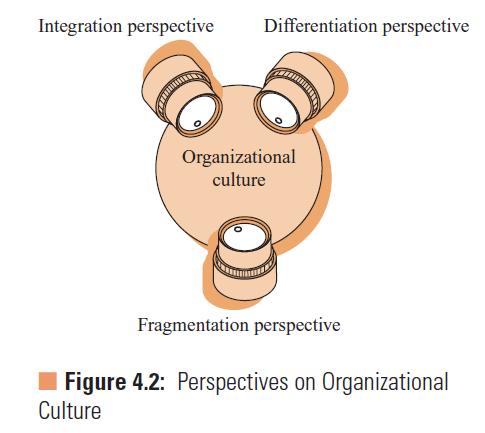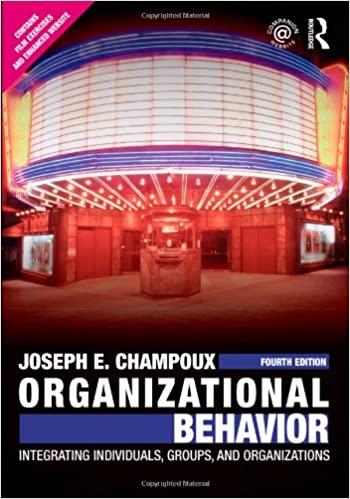Review the sections Perspectives on Organizational Culture and Cultural Symbolism. What parts of organizational culture do these
Question:
Review the sections “Perspectives on Organizational Culture” and “Cultural Symbolism.” What parts of organizational culture do these views emphasize? Discuss the insights each view gives about an organization’s culture. Use examples from your experience in the discussion.
Perspectives on Organizational Culture
You can view organizational culture from three perspectives. One perspective says organizational cultures consist of shared values and basic assumptions among organization members. A second perspective says subcultures form within an organization’s culture. A third perspective implies that ambiguity in organizations prevents pervasive agreement on values and basic assumptions. Figure 4.2 shows each perspective’s view of an organization’s culture. Each perspective lets you see an organization’s culture from a different viewpoint, suggesting what you should look for when examining a culture. You will more fully understand an organization’s culture if you use the perspectives together.
Cultural Symbolism
Organizational cultures have systems of symbols, objects that stand for something else. Some aspects of cultural symbols can have meaning for a wide group of people—organizational members, customers, and potential employees. Other aspects of cultural symbols are significant for only a small number of employees. This view of organizational cultures looks at artifacts as described earlier, but also examines anything within the culture that has symbolic meaning to its members.
Cultural symbols have several characteristics. They represent more than the symbol alone by capturing emotional, cognitive, ethical, and aesthetic meanings. Symbols efficiently summarize those meanings. They serve the important cultural function of bringing order to otherwise complex events and processes, especially those that are repeated.
Symbols can be action, verbal, or material. Action symbols are behaviors that have meaning beyond the obvious aspects of the behavior. For example, all managers dine together, but the female managers eat separately from the males, sending the added message of not valuing diversity. Verbal symbols are stories, slogans, sagas, legends, and jargon that both distinguish people in a culture and carry special meanings for them. Material symbols are found in the physical features of an organization’s culture, including architecture, interior decor, and types of clothing.
Managers can create and use a cultural symbol to signal a need for largescale organizational change. James McNerney Jr. felt he needed to emphasize the unacceptable ethics scandals that had plagued Boeing Co. He introduced general counsel Douglas G. Bain to his top managers at the company’s January 2006 annual retreat. Bain recited the federal prison numbers of two former Boeing employees. “Those are not zip codes,” said Bain. He followed by noting that many prosecutors felt Boeing’s organizational culture was “rotten to the core.” The prison numbers became a symbolic anchor for the extensive changes McNerney wanted to bring to Boeing.
Step by Step Answer:

Organizational Behavior Integrating Individuals Groups And Organizations
ISBN: 9780415804646
4th Edition
Authors: Joseph E. Champoux





